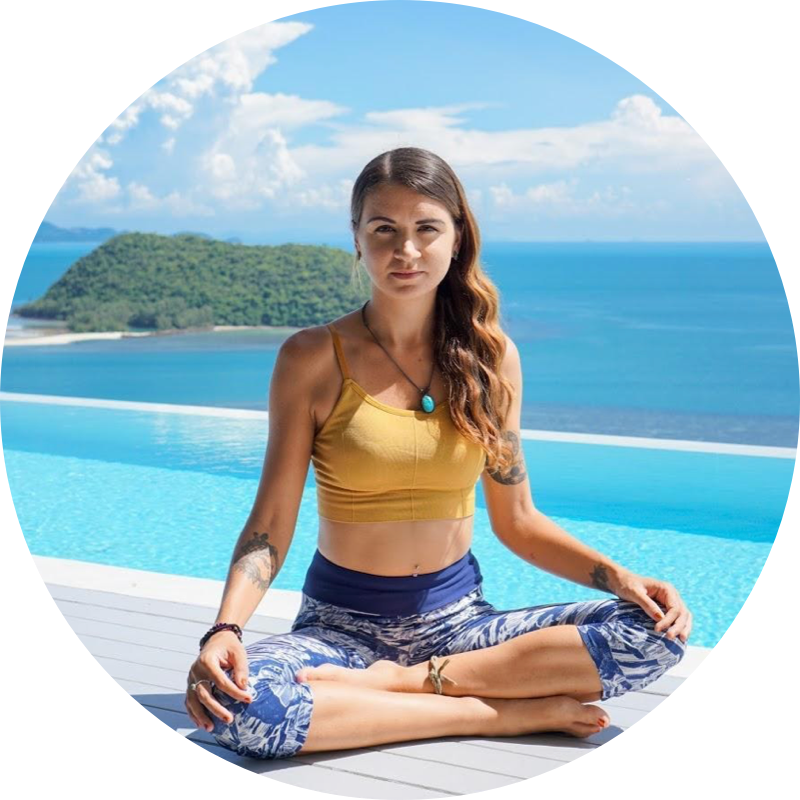
How To Transition Back To Studio Yoga Teaching Without Overwhelm Or Fatigue
Finally, in most parts of the world, yoga studios and gyms are back open after almost two years of Covid-19 lockdowns and restrictions. While getting back into a studio environment is great news, if, like many, you've been enjoying teaching virtually, the thought of readjusting may seem a little overwhelming.
It may have taken some getting used to initially, but you most likely found many advantages from teaching yoga in front of a camera. From no commute to a more efficient schedule, many yoga teachers experienced a better work/life balance from online teaching.
However, switching back to studio teaching doesn't mean you have to work more, lose your free time, and physically exhaust yourself in the process. Let's look at the challenges it may bring and how you can ensure your new work style does not result in stress, fatigue, or burnout.
Then, once you get back into the swing of things, you may find you're able to take more on without wiping yourself out.
What to consider when transitioning back to studio teaching
Your commuting time will increase
One of the most significant benefits of online yoga teaching is the lack of commuting time. Thanks to the lockdowns, we no longer had to spend hours traveling from venue to venue. Instead, it simply took 2 minutes to log onto Zoom to connect with our virtual yogis. In addition, we didn't have the stress of traffic jams or delayed public transport to deal with.
Perhaps you took advantage of this extra time to work on your personal practice or self-study. In that case, you may not be feeling too excited about adding those extra commute hours to your workweek.
You might feel like you have to put your personal practice or self-care regimes on the back burner as you'll no longer have the luxury of time. However, this is the worst thing you could do, as traveling across town to teach in multiple venues is physically and mentally draining. Therefore, self-care is more important than ever as you get back into an in-person teaching schedule.
Once you figure out your new timetable, sit down and look at how things have changed. Then, factor in the commute times and work out how to fit your personal practice into this new schedule.
Perhaps you'll find you have an hour to spare in between classes. In that case, consider using the studio for your personal practice rather than going for a coffee to kill time. Yes, you may have become accustomed to practicing at home, but the more you embrace the changes, the easier the transition will be, which brings me to my next point.
Your schedule will change
Working entirely from home gives you the luxury of fitting in everything around your classes. However, now the studio is back open, your schedule will undoubtedly change, even if you continue teaching the same time slots. You'll no longer be able to prepare dinner in your breaks or do the washing up as you're waiting for your next yogi to log onto Zoom.
However, this doesn't mean that your new schedule is disadvantageous. As yoga teachers, we don't work a 9 to 5 job, which means when we're teaching in person, we're out and about a lot and often waiting around to go to our next class. So get creative about how you can use this time.
Perhaps you can run an errand, call a family member to catch up, or bring your laptop with you and reply to your emails while sipping a coffee in a cafe. In fact, if you've spent the majority of your time at home for the last 2 years, you may find this extra time out in public to be a very welcome change. So, remember, it's all about perspective!

Teaching in person will increase your energy output
Leading classes in a studio environment generally requires more energy than instructing in front of a camera. Setting up, adjusting, working the room, and cleaning afterward are all things that only happen when you teach in person. What's more, teaching in studios is much more social, so you may find yourself hanging around to chat with your yogis after class. While this may not be a problem for the extraverts, the increased social activity could deplete introverted teachers.
Because of this, you'll need to consider how you can conserve your energy. For example, perhaps you'll decide to work more on your verbal cues so that you can demonstrate less. Another way is to use one of your regular, more advanced yogis to model specific postures rather than doing them yourself.
You might also find that you can no longer teach as many in-person classes as you did pre-covid. So, transition slowly, starting with just a few sessions. Then, once you get back into the swing of things, you may find you're able to take more on without wiping yourself out.
Some yogis may want to continue online classes
Finally, you should consider that not all your yogis will want to go back to the studio. Some of your yogis will now prefer online classes or feel apprehensive about being in an enclosed space with a group of people. This is good for you because you won't have to give up virtual classes completely.
You might choose to keep half your classes virtual and the other half in person. This will combat the challenges we detailed above, such as energy expenditure and loss of time. You could then arrange your schedule to only teach in-person classes a few days a week rather than every day to preserve energy.
Alternatively, you could take advantage of this by offering hybrid classes where you hold in-person classes at the studio and Livestream it so others can join virtually. This is an excellent idea if you get paid per yogi. You'll be able to teach to more people, which means you'll earn more, and thus, you could reduce your teaching hours, so you have more free time for your self-care and personal practice. With booking software like Momoyoga, you can easily add hybrid classes to your schedule. Find more information here.
Final thoughts
One of the biggest things that the Covid-19 pandemic has taught us is that the only way to keep moving forward is to adapt and improve. The reopening of yoga studios doesn't mean we have to go back to how teaching yoga was before. Instead, we can look at it from a fresh perspective and make changes to recreate the idyllic work/life balance we experienced through teaching online.






